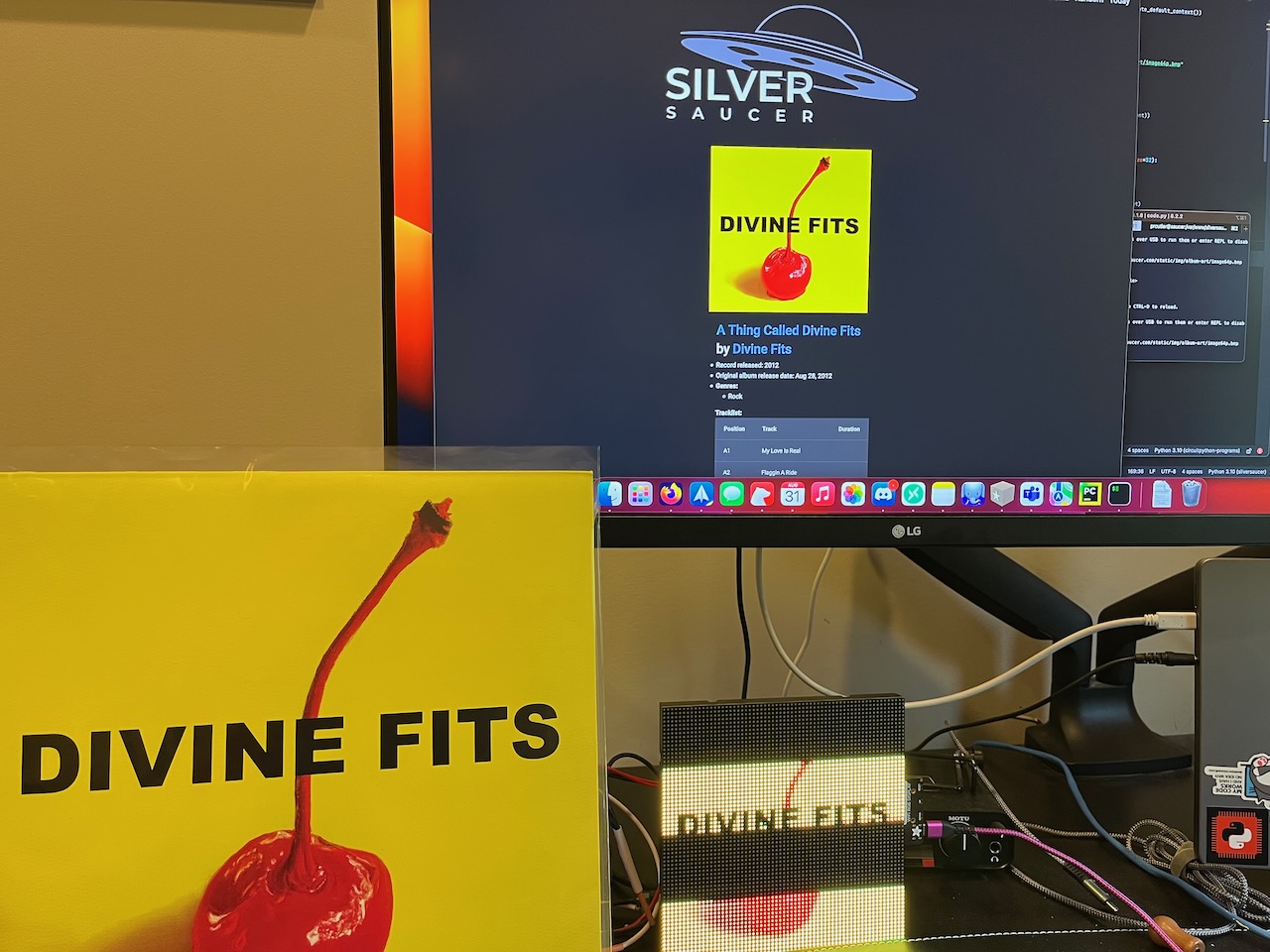MatrixPortal Album Art Display
A year and a half ago I made some progress on displaying album art on a MatrixPortal and 2 32x64 RGB matrices using CircuitPython. I was never really happy with the results and using two 32x64 matrices instead of one 64x64 matrix was difficult. I moved on and re-created the project using a PyPortal Titano. It worked well: when I chose an album I wanted to listen to SilverSaucer.com, my FastAPI web app would convert the image and send a MQTT message. The PyPortal would listen for the message, and when a new message arrived, download and display the album art along with a Winamp skin that also showed the artist and album name. I should have blogged it and taken a picture!
When Adafruit announced the new S3 MatrixPortal with so much memory - 8MB flash and 2 MB of SRAM, I decided to try again. My hope was that with that much memory, I could download and load the image into memory without having to save it.
I haven’t figured out how to do it without saving the image to the MatrixPortal yet, but I was able to repurpose my original code and had it up and running in just a few minutes.
Now came the hard part: adding gamma correction to the image so it looks closer to normal on the MatrixPortal and not washed out. Adafruit has a great Learn Guide for Image Correction for RGB LED Matrices. The guide includes a CPython program that uses Python’s PIL / Pillow library to manipulate the image and some logic to apply gamma correction.
I needed to re-create that program, which used command line arguments where you would pass the image name to the program, as one function within my FastAPI app. It took a few days of banging on it (and a few hours lost to a wrong indent(!)), but I got it. The get_discogs_image function downloads the given image and converts it from a 600px image to 320 x 320px (for the PyPortal) and a 64x64 image for the MatrixPortal. The process_image function then takes the 64x64 image and applies gamma correction and saves a new copy (which the MatrixPortal will download and display).
Some albums look a lot better than others. Considering it’s a 64x64 image, it’s practically pixel art at this point. It’s too bad that it’s difficult to photograph RGB matrices, but here is a picture showing Divine Fits’ album, it being chosen on SilverSaucer.com, and the converted image being displayed on the MatrixPortal.
